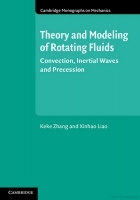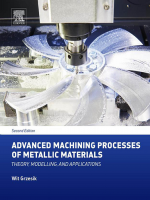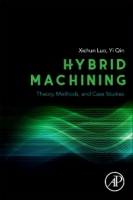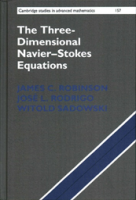Zastosowanie koncepcji cech rozpoznawczych procesu do prognozowania właściwości eksploatacyjnych części maszyn *
Application of process signature concept to prediction of the functional properties of machine parts
Author: Wit Grzesik
Mechanik nr 03/2019 - Obróbka skrawaniem
STRESZCZENIE: Omówiono problematykę związków stanu fizycznego procesu obróbki z właściwościami użytkowymi części maszyn (kształtowanymi w różnych procesach obróbki ubytkowej), wyznaczonych na podstawie funkcjonalnych charakterystyk, tzw. sygnatur procesu. Określono dominujące zjawiska i oddziaływania energetyczne w procesie skrawania w odniesieniu do funkcjonalności technologicznej warstwy wierzchniej. Podano praktyczne przykłady zastosowania koncepcji sygnatur procesu do wytwarzania warstwy wierzchniej o określonych właściwościach eksploatacyjnych.
SŁOWA KLUCZOWE: obróbka skrawaniem, sygnatura procesu, warstwa wierzchnia, właściwości użytkowe
ABSTRACT: The purpose of this survey is to explain and determine the relationships between physical state of the machining process, i.e. the decisive physical phenomena occurring during the process and the functional properties of the machined parts using the concept of process signatures. Dominant phenomena and energy transformation in the machining process are quantified in terms of the functionality of the technological subsurface layer. Some practical examples of the application of process signature to the producing of subsurface layer with demanded functional properties are presented anddiscussed.
KEYWORDS: machining processes, process signature, surface layer, functional properties
BIBLIOGRAFIA / BIBLIOGRAPHY:
- Grzesik W. „Wpływ topografii powierzchni na właściwości eksploatacyjne części maszyn”. Mechanik. 8–9 (2015): s. 587–593.
- Grzesik W. „Hybrydowe procesy obróbki ubytkowej. Definicje, zasady tworzenia i znaczenie w przemyśle”. Mechanik. 5–6 (2018): s. 338–342.
- Grzesik W. „Podstawy skrawania materiałów konstrukcyjnych”. Warszawa: PWN, 2018.
- Kaczmarek J. „Podstawy obróbki wiórowej, ściernej i erozyjnej”. Warszawa: WNT, 1971.
- Field M., Kahles J.F. “Review of surface integrity of machine components”. Annals CIRP. 20, 1 (1971): s. 107–108.
- Jawahir I.S., Brinksmeier E., M’Saoubi R., Aspinwall D.K., Outeiro J.C., Meyer D., Umbrello D., Jayal D. “Surface integrity in material removal processes: recent advances”. CIRP Annals. Manufacturing Technology. 60, 2 (2011): s. 603–626.
- M’Saoubi R., Chandrasakaran H., Outeiro J.C., Dillon O.W., Jawahir I.S. “A review of surface integrity in machining and its impact on functional performance and life of machined products”. International Journal of Sustainable Manufacturing. 1, 1–2 (2008): s. 203–236.
- Feld M. „Technologia budowy maszyn”. Warszawa: WNT, 1993.
- Burakowski T. „Areologia. Podstawy teoretyczne”. Radom: Wydawnictwo Naukowe Instytutu Technologii Eksploatacji, 2013.
- Wang B., Shanqiang L. “Influence of tool structure, tool material and tool wear on machined surface integrity during turning and milling of titanium and nickel alloys – a review”. Int. J. Advanced Manufacturing Technology. 98, 5–8 (2018): s. 1925–1975.
- Willert M., Riemer O., Brinksmeier E. “Surface integrity in precision turning of steel”. Int. J. Advanced Manufacturing Technology. 94, 1–4 (2018): s. 763–771.
- Brinksmeier E., Gläbe R., Klocke F., Lucca D.A. “Process signatures – an alternative approach to predicting functional workpiece properties”. Procedia Engineering. 19 (2011): s. 44–52.
- Brinksmeier E., Klocke F., Lucca D.A., Sölter J., Meyer D. “Process signatures – a new approach to solve the inverse surface integrity problem in machining processes”. Procedia CIRP. 13 (2014): s. 429–434.
- Brinksmeier E., Meyer D., Heinzel C., Lübben T., Sölter J., Langenhorst L., Frerichs F., Kämmler J., Kohls E., Kuschel S. “Process signatures – the missing link to predict surface integrity problem in machining”. Procedia CIRP. 71 (2018): s. 3–10.
- Brinksmeier E., Reese S., Klink A., Langenhorst L., Lübben T., Meinke M., Meyer D., Sölter J. “Underlying mechanisms for develop-ing process signatures in manufacturing”. Nanomanufacturing and Metrology. 1 (2018): s. 193–208.
- Frerichs F., Sölter J., Lübben T., Brinksmeier E., Zoch H.-W. “A simulation based development of Process Signatures for manufacturing processes with thermal loads”. Procedia CIRP. 45 (2016): s. 327–330.
- Meyer D., Kämmler J. “Surface integrity of AISI 4140 after deep rolling with varied external and internal loads”. Procedia CIRP. 45 (2016): s. 363–366.
- Przybyłowicz K. „Podstawy teoretyczne metaloznawstwa”. Warszawa: WNT, 1999.
- Szargut J. „Modelowanie numeryczne pól temperatury”. Warszawa: WNT, 1992.
DOI: https://doi.org/10.17814/mechanik.2019.3.25
* Artykuł recenzowany



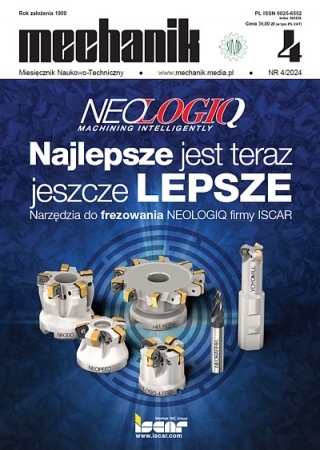
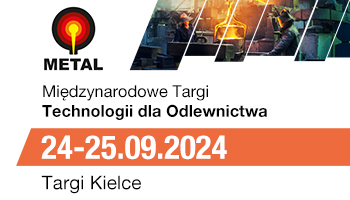
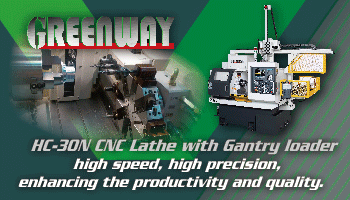

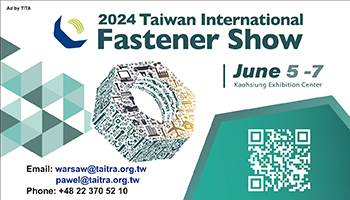

.gif)
